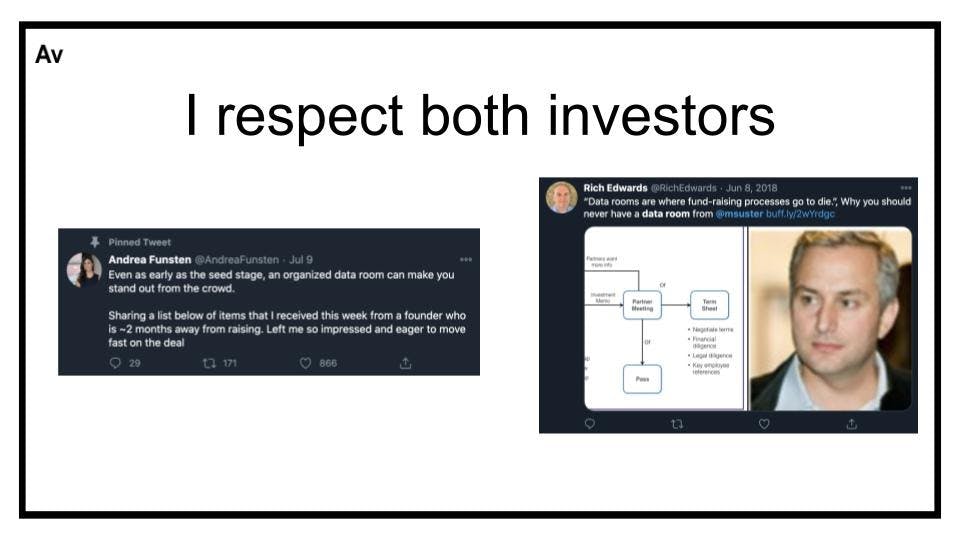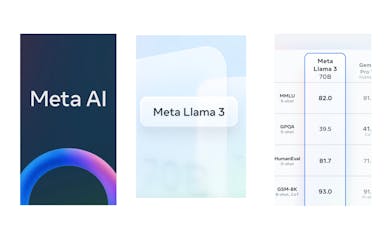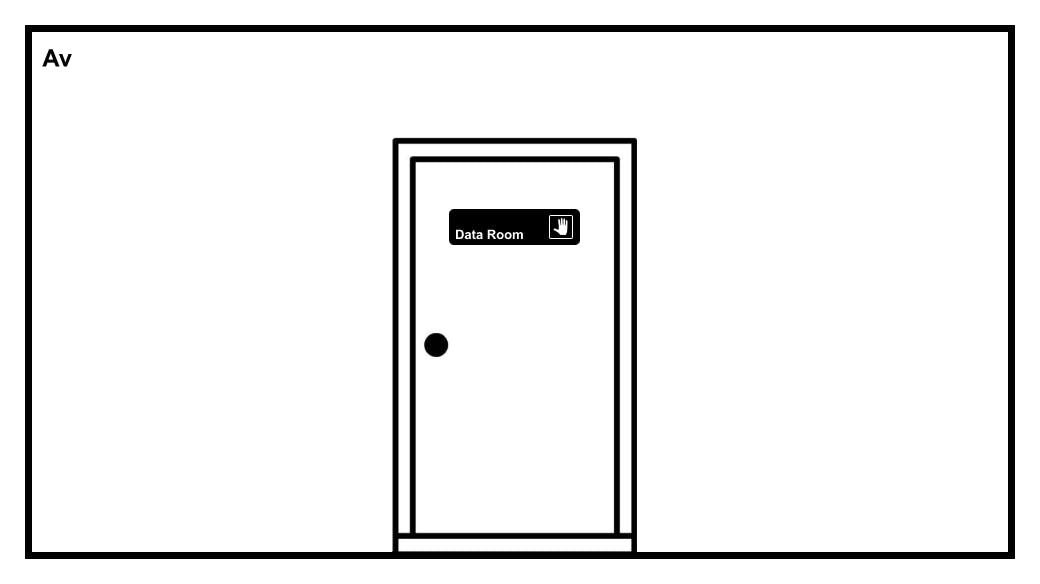And what the heck are they?
As with so many Fundraising-related topics, data rooms are a part of the process that tends to confuse founders.
Jason Yeh is an ex-VC & the founder of Adamant, a group focused on making fundraising easier. Founders ❤️ binging his Fundraising Fieldnotes newsletter and podcast Funded before raising capital. Find Jason on Twitter: @jayyeh.
What is a data room? What goes into a data room? Why are they important? Who should be let into a data room? Should there be carpet or hardwood floors?
The last was a bad joke but it’s not too far from how confused founders can get when it comes to the topic.
Let’s start with the basics.
What is a data room?
A data room is simply a compilation of information that teams provide investors during a due diligence (DD) process. The “room” isn’t a physical space but rather some digital folder of documents, spreadsheets, and any other documents that would help with the DD process.
Of course, defining an esoteric word with another one hardly helps, so a quick definition of “due diligence” is also in order. Due diligence is a process to verify claims through data analysis, reference checks, and research. In the startup fundraising context, these claims are whatever is shared as truth in a pitch or suppositions an investor makes in their head.
Here’s a more concrete example. Felicia Founder claims in her deck and live pitch that her company is based on an innovative new ML technology unique to their team with an install base growing 50% month-over-month and strong relationships or LOIs with Coinbase and Dapper Labs. Her team slide is glowing with impressive experience like leading strategy at MLB.com. An interested investor thinks, “I bet some of the sports leagues would die for this tech!”
This opportunity presents a number of exciting claims. Let’s list them:
- Innovative, unique ML technology
- 50% MoM growth
- Strong relationships with Coinbase and Dapper Labs
- Impressive founder that worked at leading sports tech company (MLB.com)
- Possible extension to sports leagues (the investor’s guess)
How many can be taken at face value? On the extreme side, there are well-known cases of straight-up lying during fundraising. And while Theranos isn’t the norm, the non-extreme version of innocent story-spinning or light exaggeration is quite common. So the answer is, who knows what can be taken at face value.
In the current market, speed is what wins deals and investors have been taking risks by overlooking extensive due diligence before committing to invest. That said, if given the opportunity to, an investor would prefer to conduct due diligence – especially on the parts of a story that are most crucial to their investment. They want to validate what is presented to them with a secondary source, additional data, etc. That validation is their due diligence.
So I get due diligence now, but why data rooms exactly?
Why? Even in a more subdued market, momentum closes deals while friction and time blocks them. Data rooms allow investors to execute diligence as efficiently as possible. If done well, the data room helps verify claims you made and answer follow-up questions investors have.
And when? Like when do I create one and when do I send it?
Your data room should be a living, breathing collection that you can start on as soon as you begin planning your fundraise (with a basic level of content initially) and add to as you gain better understanding of what investors need to see.
As far as when to share a data room with investors, there are a variety of opinions.

I often reference these two exact opposite opinions on the topic of when to send a data room when I coach founders who are starting to educate themselves on fundraising. The point is that there are many circumstances in which you can find two equally credible people who recommend the exact opposite piece of advice.
In this case, Andrea Funsten, a managing partner at Basecamp, and Mark Suster, Managing Partner at Upfront Ventures, share wildly different views on data rooms. Andrea believes that founders should share data rooms immediately with complete transparency while Mark thinks that founders should NEVER share a data room (“Why you should never have a data room...”).
Mark’s POV is less extreme than the clickbaity headline suggests and closer to what I believe – you shouldn’t share data rooms unless you believe an investor is actually leaning in.
First, providing access to a data room will rarely change an unenthusiastic investor’s mind. A lukewarm investor who flippantly says “hey send me your data room” will not move forward with your deal. In the best case, they’ll just warehouse your information (either explicitly by saving the files for reference later or storing it in their own memory). In the worst case, that data makes its way to competitors. I see so little value in providing your data to an investor that won’t move forward anyways, so why do it?
Second, access to a Data Room can be a good carrot to test a VC’s level of interest. Suster thinks about it as trading data for engagement. If they’re going to get your data room, there should at the very least be a meeting scheduled to review the data, if not a final partner meeting to discuss the deal. This is when data rooms should be provided.
To be clear, I’m not advocating founders drag their feet around data rooms. On the contrary, if an investor is ready to move forward, you should have your fulsome and super-organized data room ready to send over ASAP. You need to sustain their attention and continue building their excitement to drive the deal across the line, which being quick with your shiny data room and follow-up meeting will help with.
A “shiny” data room sounds nice... how do I do that?
The easiest way to start adding things to a data room (in a nice folder structure) is to start anticipating questions investors might have about you, your company, and the opportunity. From there you’ll just start adding documents to answer those questions. As you encounter more questions, you can continue adding more information. Remember, it’s a living thing.
A frequent question I get is “what are common elements of a data room.” The smartest way to think about this in terms of the questions that need to be answered. To help with this, I pulled together a list of standard questions investors might have and the materials that would correspond within your data room. Feel free to download here.
As far as how to technically set up the data room, take the same approach as how you deliver your decks… always through a platform that allows you to control access, view analytics, and make changes on the backend. I recommend DocSend which has a new data room tool, but Box has been doing this for years as well as a number of other tools.
Some last thoughts
While you give data room access when investors are leaning in, you still haven’t gotten them past the finish line today. The data room should still support the story you began telling with your forwardable blurb and built upon with your deck and live pitch. Make sure you have that awareness as you build your data room.
Lastly, I fully realize you might not have created a lot of the artifacts mentioned. A lot of companies start fast and loose, which doesn’t leave much time for things like extensive pro formas or product roadmaps. But don’t throw a tantrum at all the new work you have to do JUST for VCs. Realize that the forcing function to create these things will benefit the company. VCs want to see a pro forma because good companies should be managing their company by the numbers and planning ahead. And you want to be a good company, right?
Go build that shiny data room!
Comments (15)
Daniel Engels
front-end, marketing & tech
vados
🚀glp1.guide
Abraham Samma
MD, researcher. Working on Oneplaybook
Julia Doronina
Marketing & Growth
Kevin Siskar
Host of the Ambition Today podcast.
Sujitha Mm
Looking SDE JOBS
More stories

Kyle Corbitt · How To · 3 min read
What we've learned in 3 days of Llama 3

Aaron O'Leary · Announcements · 2 min read
Introducing Shoutouts

Finn Lobsien · Opinions · 5 min read
Can Devin AI Replace Product Managers?

Aaron O'Leary · News · 2 min read
Meet Nvidia's new localized AI chatbot

Sarah Wright · News · 2 min read
The top 15 AI products from 2023


